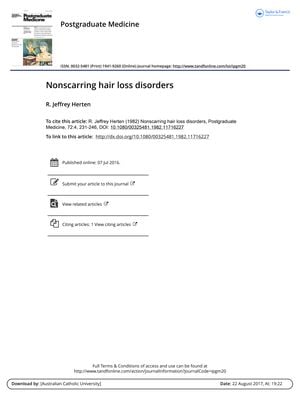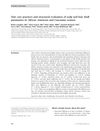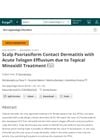Nonscarring Hair Loss Disorders
October 1982
in “
Postgraduate Medicine
”
anagen effluvium chemotherapy telogen effluvium alopecia areata alopecia totalis alopecia universalis steroids trichotillomania tinea capitis antifungals androgenetic alopecia androgen metabolism senescent alopecia hair pull hair count density mapping hair regrowth stress illness autoimmune diseases behavioral condition fungal infection aging

TLDR Most types of hair loss can regrow naturally, but there are no effective cures for male pattern or age-related hair loss, and only limited options for females.
In 1982, R. Jeffrey Herten's article detailed various nonscarring hair loss disorders, their causes, diagnostic methods, and treatments. The hair growth cycle consists of anagen, catagen, and telogen phases, with hair loss assessment techniques including hair pull, hair count, and density mapping. Anagen effluvium, often caused by chemotherapy, usually sees hair regrowth once the cause is removed. Telogen effluvium, triggered by stress or illness, results in delayed hair shedding. Alopecia areata, linked to autoimmune diseases, may progress to alopecia totalis or universalis, with treatments like steroids offering temporary relief. Trichotillomania, a behavioral condition, can be distinguished from alopecia areata and treated by allowing hair regrowth. Tinea capitis, a fungal infection, is treatable with antifungals. Adrenogenetic alopecia, related to androgen metabolism, has no effective treatment for males and limited treatment for females. Senescent alopecia, associated with aging, also lacks effective treatment. The article concludes that while most hair loss types see spontaneous regrowth, there are no effective treatments for pattern or senescent alopecia, except for a potential slowdown in female pattern hair loss.





